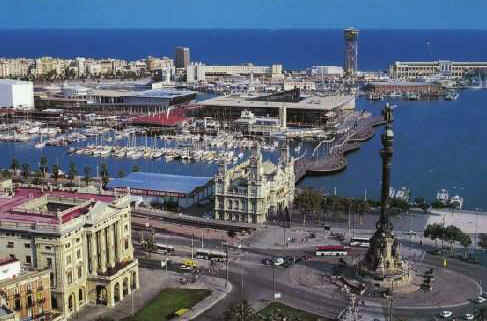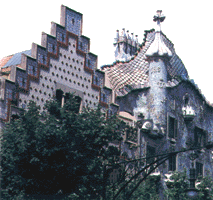| A walking tour of the medieval rabbit warren
that is Old Barcellona will necessarily weave and wind and bend back on itself.
If you intend stopping at any of the sights along the way ,you'll need to
allow at least two long hard days.Starting from Placa de Sant Jaume, the heart
of Barcellona. The north-west and south-east sides of the square are lined by
the "Palau de la Generalidat and Ajuntament", the seats of regional
and city government respectively. Close your eyes for a second and imagine low,
columned buildings and lots of togas.This was the forum of Roman Barcino
and temple was just back a bit to the north on the modest rise of Mont
Taber. Together these two buldings formed the centre of civic and religious
life. The town's two main roads crossed through the forum. From rougly north
to south ran the decamanus (now Carrer del Bisbe Irurita)intersecated
by the cardo-a classic plan for roman settlement,as seen right across the
empire.It was a military camp turned into a town-you can learn about it in the
Museu d'Història de la Ciutat. La Rambla is the places to head for a first
taste of Barcellona's atmosphere. This most famous street's flanked by narrow
traffic lanes,the middle of La Rambla is a broad,three lined pedestrian
boulevard,crowded every day until the wee hours with a cross-section of
Barcellona's varied populance and out of towners.Dotted with cafès,
restaurants, kiosks and newsstands, sporting reams of international newspapers
and magazines .La Rambla rarely allows a dull moment. It gets its name from a
seasonal stream (ramla in Arabic) that once

PORT VELL BARCELLONA COLUMBUS MONUMENT
|
 |
 |
|
 MODERNISM
CASA AMATTLER MODERNISM
CASA AMATTLER
|
|
ran here. It was outside the city walls
until the 14th century, and build up
with monastic buildings and subsequently mansions of the well to do in the
16th to the early 19th centuries. Unofficially, it's divided into 5 sections,
with their own names, although street numbers are in single sequence, going up
from the bottom end. This explain why to many people the boulevard also goes
by the name of La Rambla.You can see the Museu Maritim.West of the monument a
Column on Avinguda de les Drassanes stand the Rials Drassanes (Royal Shipyards),
a rare work of non-religious monumental Gothic architecture that now houses
the Museum Maritim-a fascinating tribute to the seafaring exploits that shaped
much of Barcelona's history. The shipyards
were, in their heyday, among the greatest in all Europe
|
|
|
